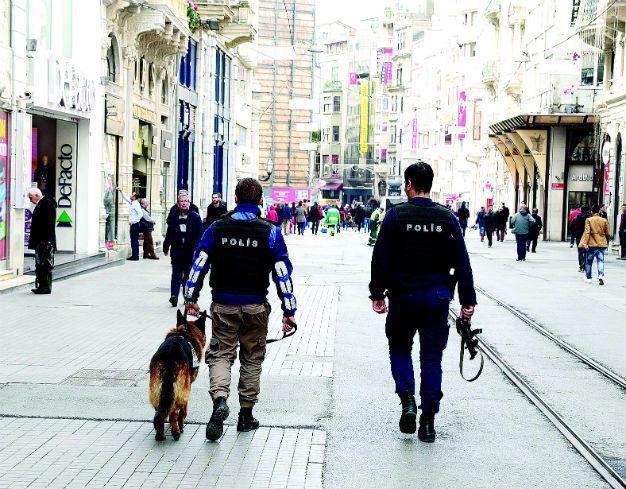Istanbul suicide bomber ‘known but not tracked’
Deniz Zeyrek – ANKARA

DHA photo
The Islamic State of Iraq and the Levant (ISIL) militant who conducted the March 19 terror attack in Istanbul had been spotted by the intelligence services as a “supporter of a terrorist group,” but he was not on the national judiciary informatics system (UYAP), Turkish security and intelligence sources have stated.
Security sources said Mehmet Öztürk, the Turkish ISIL militant, did not have a prosecutor-approved UYAP record as his family did not notify the police about his disappearance or his membership of ISIL. As he did not have a criminal record, he could not be caught at road checks or by his hotel registration.
Responding to questions regarding the short amount of time it took to identify him after the attack, sources said the perpetrator’s head, recovered after the attack, was clearly identifiable despite the explosion. When the image of his face was checked with the National Intelligence Agency (MİT) and the security directorate via a face identification system, the two bodies came up with different names. While the MİT identified the attacker as Mehmet Öztürk, the security directorate identified him as Savaş Yıldız. The attacker’s identification was confirmed only after DNA tests were conducted with samples taken from the two families.
Photo in intel archives
Sources also added that the attacker’s image was in the photo archive of the MİT and the security directorate despite his lack of a criminal record, as the archive includes pictures taken during passport controls. As Öztürk travelled back and forth from Turkey to Syria many times and was determined to be “in contact” with others affiliated with terrorist groups, he was filed as a “supporter of a terrorist group” in security archives.
Meanwhile, it was also claimed that Öztürk was captured in 2015 in the Elbeyli district of southern province of Kilis after he crossed into Turkey illegally with his brother, identified by the initials Y.Ö., and a number of other people. Upon undergoing an ID check, he was allegedly freed as his name was not on the “wanted” list.
When asked why the attacker was not subject to a police search despite his presence in security archives, sources stated that “blacklisting” had no legal repercussions, and for police to take action a prosecutor-issued search record was needed.
Öztürk, who killed four people and wounded 39 others when he blew himself up on early March 19 in Istanbul’s İstiklal Avenue, was buried in his hometown in the southern province of Gaziantep on March 21.
